ISO
MU Survey 2015: The Global Results
More than 550 laboratory professionals from over 85 countries around the world participated in the 2015 Global Measurement Uncertainty Survey. Here we present the results from the countries outside the US. What are labs thinking about measurement uncertainty? What are they doing? What are they reporting to clinicians? And what are clinicians doing with mu?
Global Measurement Uncertainty Survey 2015
Sten Westgard, MS
November 2015
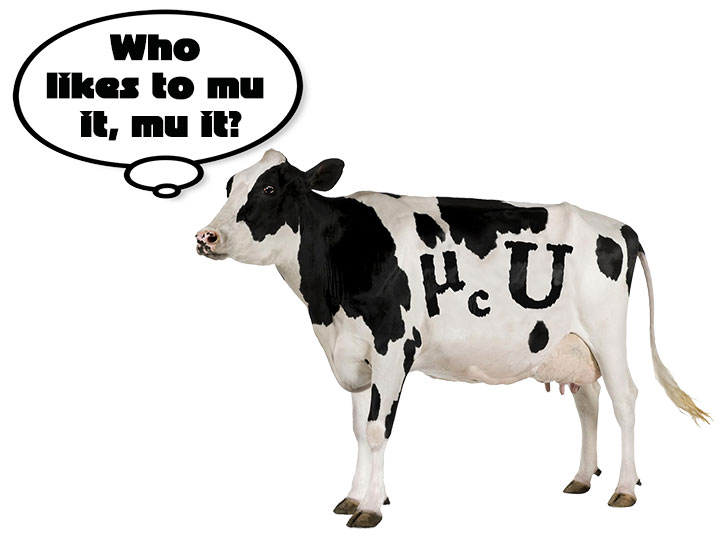 More than 550 laboratory professionals responded to the 2015 Global Survey on Measurement Uncertainty. As it happens, the differences between the results from the US and the rest of the world were quite different. Therefore we decided to present results from all the labs outside the US separately from the US results.
More than 550 laboratory professionals responded to the 2015 Global Survey on Measurement Uncertainty. As it happens, the differences between the results from the US and the rest of the world were quite different. Therefore we decided to present results from all the labs outside the US separately from the US results.
1. What kind of laboratory responded to the survey?
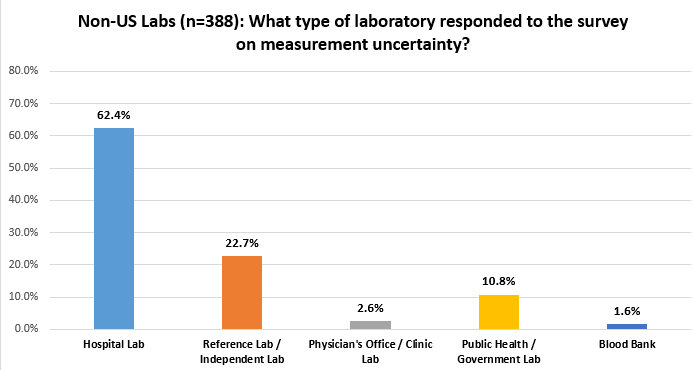
Most of the responders were from hospital laboratories and reference laboratories.
2. What is the estimated volume of the laboratories that responded to the survey?
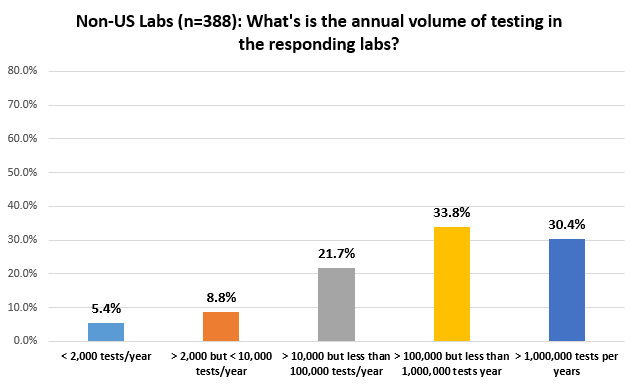
The majority of the responders are large volume (more than 100,000 tests per year and higher).
3. How many laboratories use measurement uncertainty?
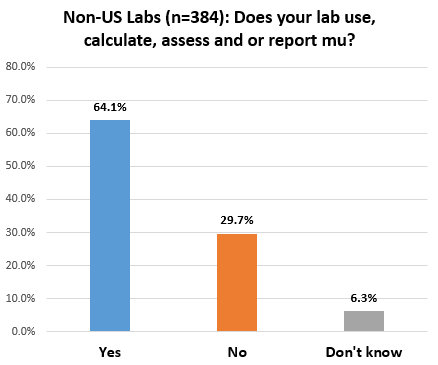
A majority of these responders are using, calculating, assessing and (possibly) reporting measurement uncertainty.
4. What type of measurement uncertainty do laboratories calculate?
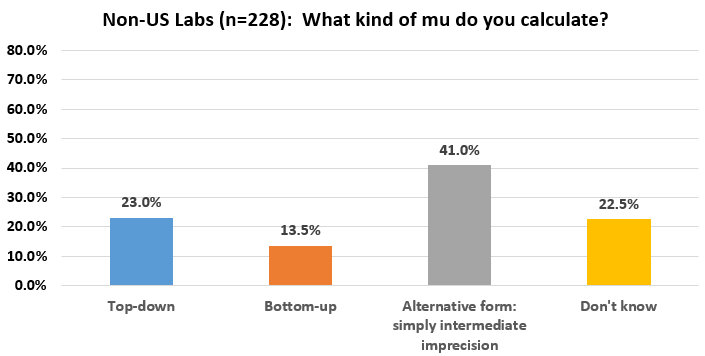
The largest number of labs just use the simplest form of measurement uncertainty - they double the imprecision of the method that has been observed over an intermediate period of time. There is no one dominant form of measurement uncertainty calculation. Top-down is more popular than bottom-up. A significant number of respondents honestly don't know how they calculate mu.
5. Do laboratories include measurement uncertainty?
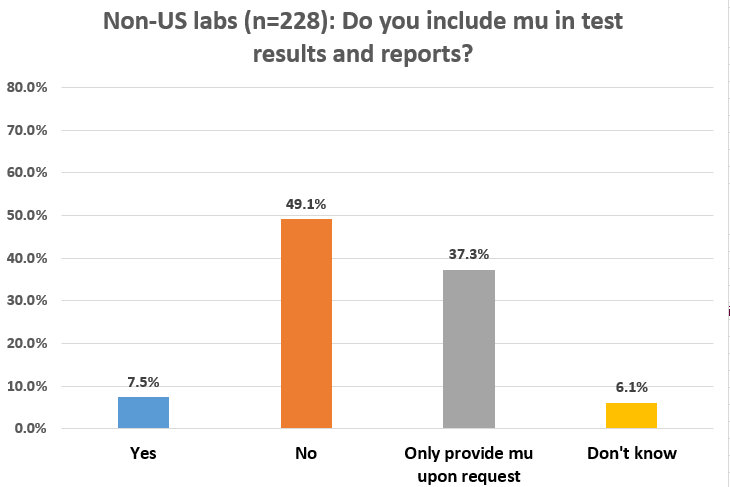
Less than 10% of laboratories actually report measurement uncertainty in their test results. 85% of laboratories don't routinely offer mu to their clinicians.
6. What regulations require laboratories to use measurement uncertainty?
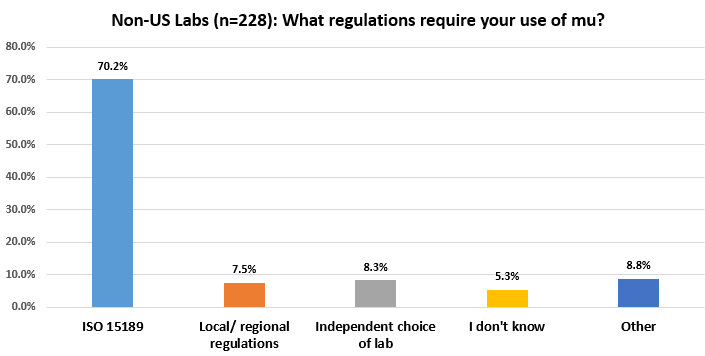
Not surprisingly, ISO 15189 is the dominant requirement for measurement uncertainty. Even in the "other" comments, ISO 17025 and NATA (India) were referenced. The ISO mandate is very strong for measurement uncertainty and it is reflected in the responses.
7. What do laboratories do with their measurement uncertainty results?
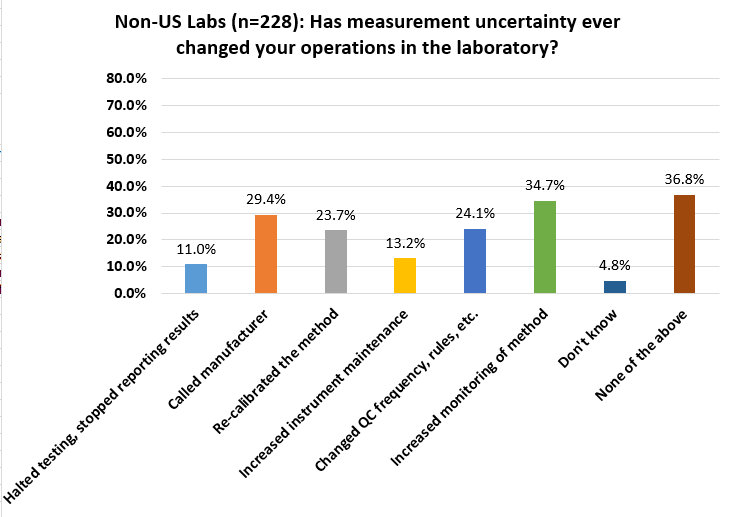
Laboratories that calculate measurement uncertainty do find some use for it in the laboratory. Based on a change in mu, labs are most likely to increase monitoring of the method, call the manufacturer, change QC frequency, or re-calibrate the method. Few labs actually stop testing and reporting based on mu.
It should be noted that the most popular response of laboratories to a change in measurement uncertainty is ... to do nothing.
8. How often to clinicians ask for measurement uncertainty?
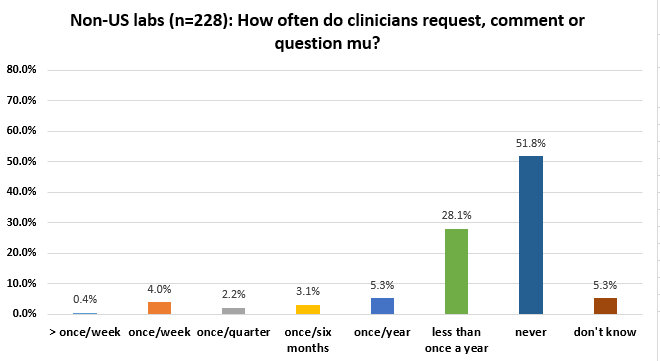
90% of laboratories find that measurement uncertainty isn't used by clinicians more than once a year. More than 75% of laboratories find that measurement uncertainty is useful less than once a year or never useful at all.
10. How often do clinicians change their treatment based on measurement uncertainty?
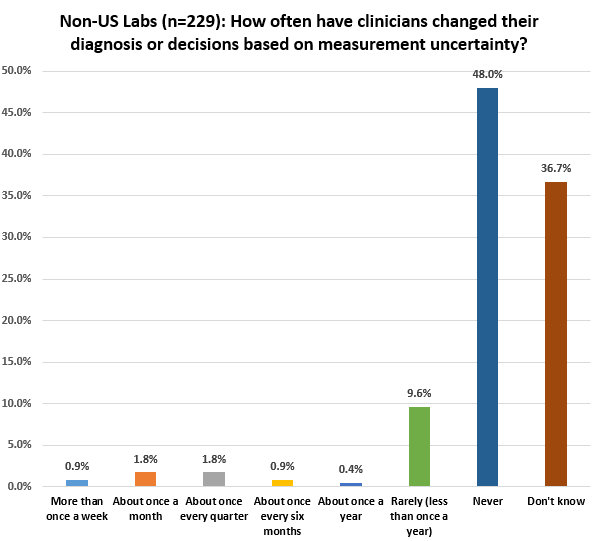
When it comes to an actual impact on patient outcome, measurement uncertainty makes even less of a difference.
A majority of labs report that mu has changed a clinical outcome either never or less than once a year. More than a third of laboratories report that they don't know if there has been any clinical impact to their use of measurement uncertainty. Only slightly higher than 5% of labs find that mu has a clinical impact within any given year.
11. For labs that don't use measurement uncertainty, why not?
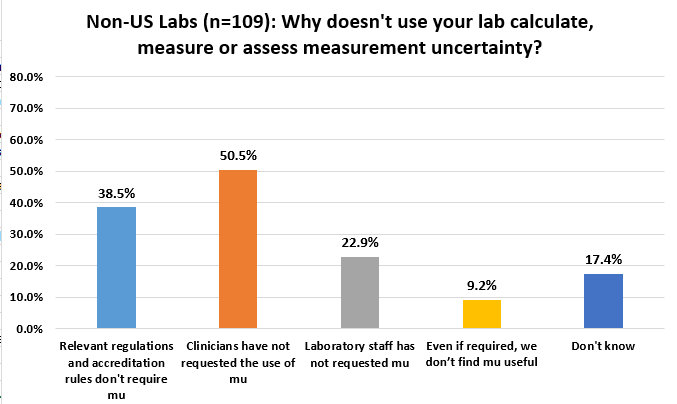
For those laboratories that replied that they don't use measurement uncertainty, we probed their reasoning.
Two dominant reasons emerged. Most importantly, their regulations do not require it. In many countries around the world, ISO 15189 is not mandatory but only optional. Another reason, actually larger for these labs, is the fact that clinicians have not asked for the use of measurement uncertainty. Some labs also have felt that they themselves do not want to implement measurement uncertainty, either.
12. For labs that don't use measurement uncertainty, what would motivate them to change their minds?
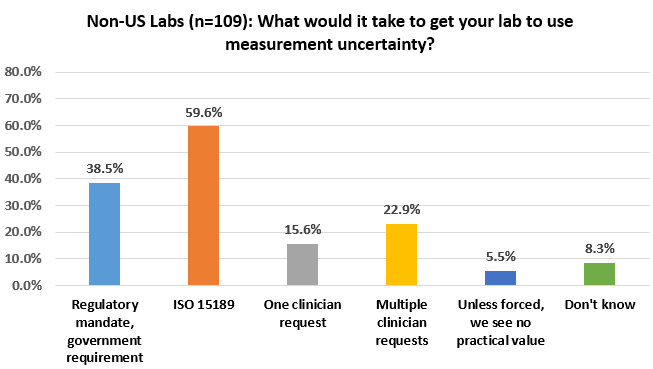
If laboratories adopt ISO 15189, not surprisingly, they will have to adopt measurement uncertainty. It appears that mu will mainly be adopted by labs driven by regulatory and accreditation needs. Few labs would consider adding mu on the basis of clinician requests.
